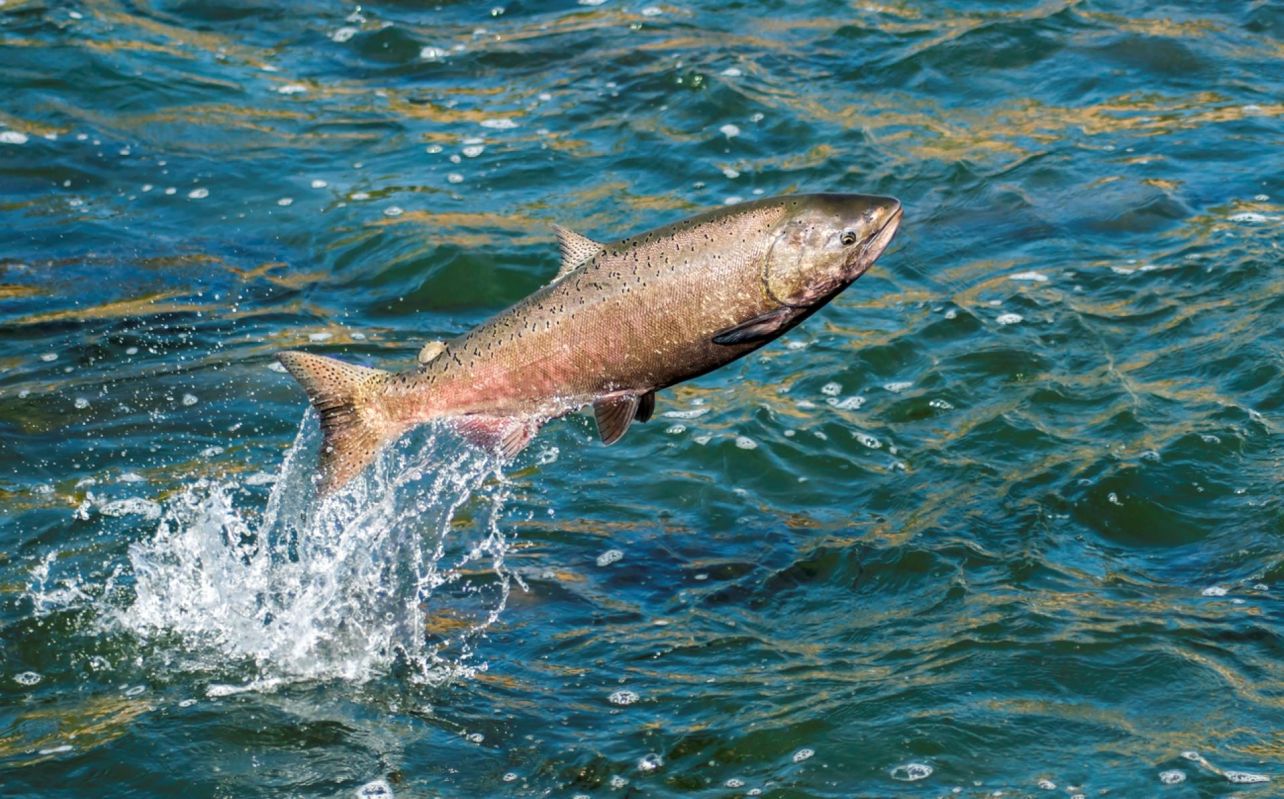Droughts and rising temperatures across North America have been drying up rivers and aquifers for years. That's not just dangerous for people on land — it's also a problem for fish living in what water is left.
This year, authorities struggled to get Pacific salmon up the too-warm, dried-up rivers to spawn the next generation of fish, Mongabay reported.
What's happening?
The natural life cycle of a salmon involves being born in fresh water, swimming downstream to the ocean to feed, grow, and mature, and then returning upstream to mate and lay eggs. Salmon have evolved to do this at a specific time of year so that their offspring will hatch in the best conditions to ensure their survival, Mongabay explained.
However, this year, drought rocked British Columbia, Washington, and Oregon. Snow melted earlier than usual and not much rain fell. By the time the salmon were ready to migrate upriver, the water in many rivers was too shallow and too warm for them.
Salmon can tolerate temperatures up to 73 degrees Fahrenheit without dying, but anything over 63 degrees is stressful to their bodies, per Mongabay.
Jason Hwang, vice president of salmon at BC-based environmental nonprofit Pacific Salmon Foundation, compared the journey to "swimming a marathon in a sauna." That stress makes them more vulnerable to parasites and diseases that could kill them even if the heat doesn't.
Similar conditions led to mass salmon deaths last September.
Why does a bad year for salmon spawning matter?
Wild-caught salmon are a food source for nations all around the Pacific, including the U.S. Not being able to reproduce could damage their population severely — but what's worse is that the fishing industry might keep catching the fish as if they were still plentiful.
"If we go into those years with blinders on pretending like the status quo is going to work that year, we run the risk of extirpating small populations or driving these populations down to a level that will no longer produce a sustainable abundance to harvest," Will Atlas, a Wild Salmon Center biologist, told Mongabay.
In other words, poor spawning and overfishing could spell death for this prized species.
What's being done to help spawning salmon?
This year, members and friends of an Indigenous group called the Xwísten gathered to help salmon up the Fraser River, Mongabay reported. They lifted fish in nets, passed them up rocky falls, dug out paths for the salmon, and ended up moving more than 7,000 fish in total.
On the Cowichan River, officials pumped water from the lake into the riverbed to help salmon travel upstream, and at Dunn Creek, hatchery staff dug out silt from the mouth of the stream to aid its flow.
Join our free newsletter for cool news and cool tips that make it easy to help yourself while helping the planet.









